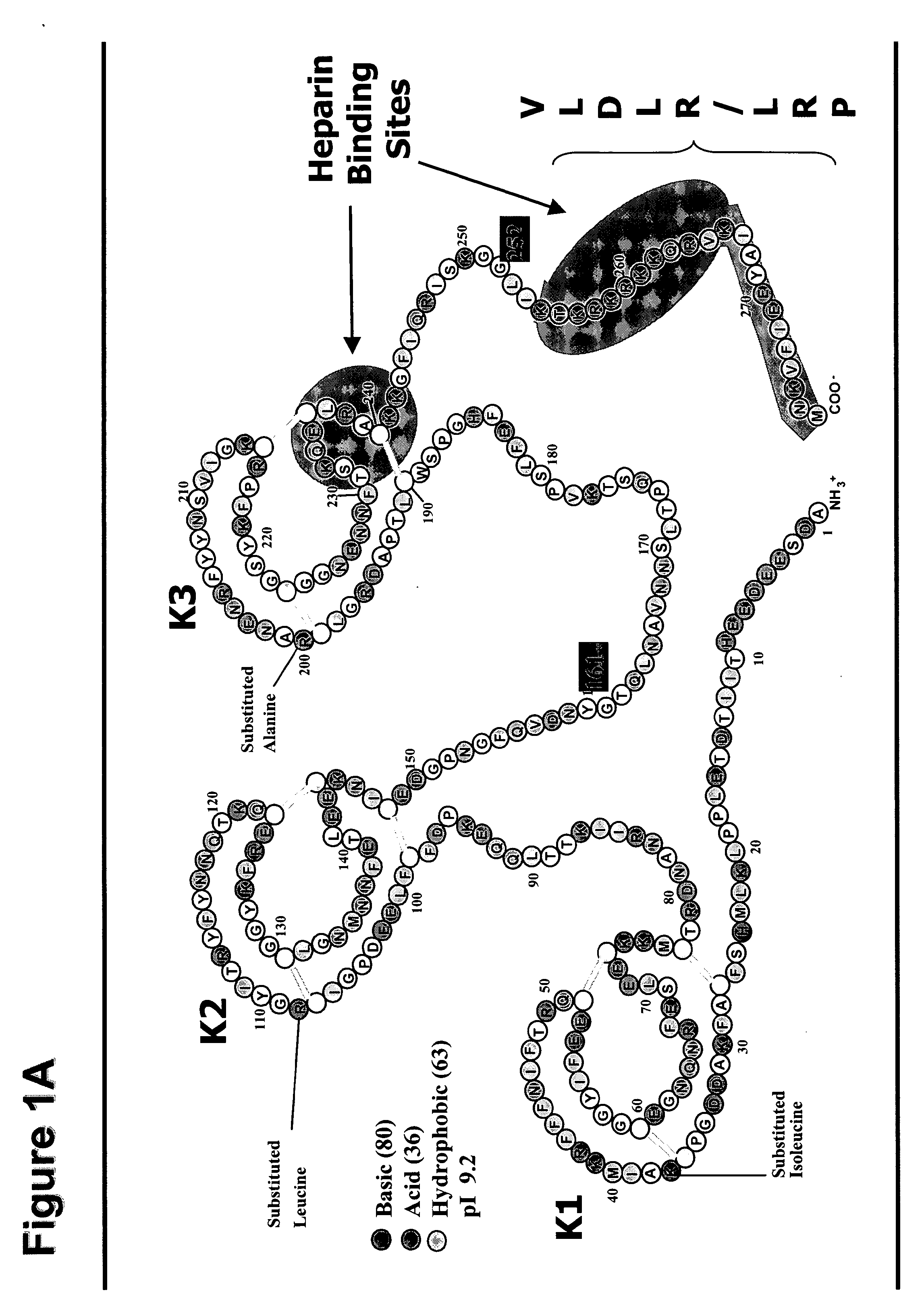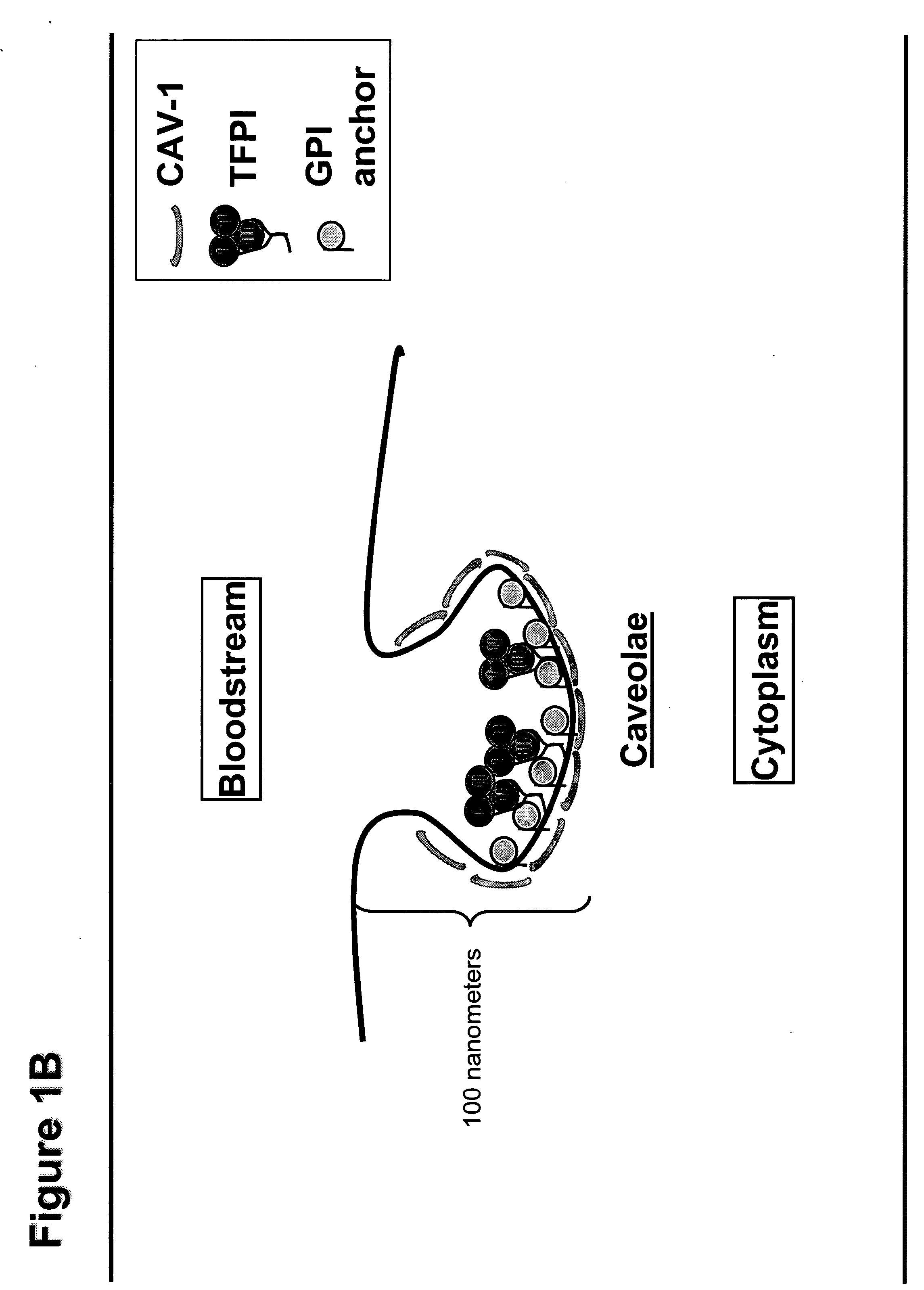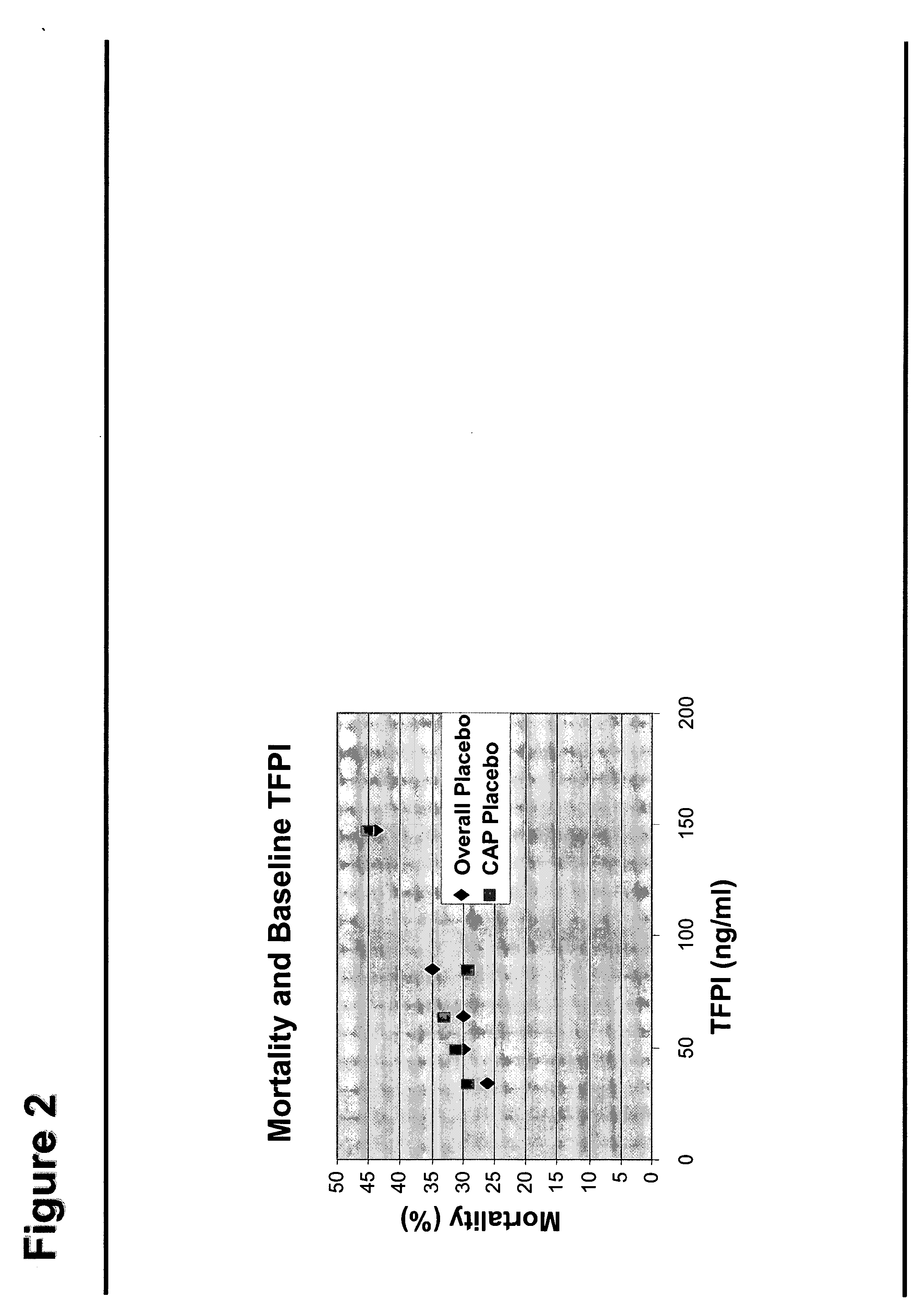Use of TFPI to Treat Severe Bacterial Infections
a bacterial infection and bacterial technology, applied in the direction of antibacterial agents, peptide/protein ingredients, extracellular fluid disorder, etc., to achieve the effect of reducing the risk of mortality
- Summary
- Abstract
- Description
- Claims
- Application Information
AI Technical Summary
Benefits of technology
Problems solved by technology
Method used
Image
Examples
example 1
Materials
[0089]Monoclonal antibodies to Kunitz domain 1 (4904) or Kunitz domain 2 (4903) of TFPI were purchased from American Diagnostica Inc. (Greenwich, Conn.). We made additional monoclonal antibodies (2H8, against Kunitz domain 1, and 17, against the C-terminus). The control mouse IgG1 was purchased from Jackson ImmunoResearch Lab Inc. Human umbilical vein endothelial cells (HUVEC) were purchased from Clonetics (San Diego, Calif.) and cultured at 37° C. in EBM-2 media (Clonetics). Lipopolysaccharide from E. coli (LPS) was purchased from Sigma (L-2654).
[0090]In the examples that follow, all exogenous TFPI is ala-TFPI.
example 2
[0091]Blood was drawn from healthy donors in the absence of anticoagulants and under conditions which minimized platelet activation. Donor selection excluded use of aspirin or other blood thinners, cholesterol-lowering drugs, anti-inflammatory agents, anti-histamines, and antibiotics. The reagent mixtures containing 10 ng / ml LPS and different concentrations of the mAbs with or without ala-TFPI were pre-assembled in 96-well dishes. Blood was added to 1:10 ratio in RPMI-1640 medium with or without 10% FBS of a total volume of 200 μl within 10 min of donation. The diluted blood samples were incubated for 16 to 20 hrs at 37° C. in a cell culture incubator, and aliquots of the cell supernatant were analyzed for secretion of inflammatory cytokines using an IL-6 ELISA kit (Biosource). Release of other cytokines was measured using a LINCOPLEX® cytokine kit (LINCO Research).
example 3
Whole Blood Plus HUVEC Assay
[0092]HUVEC cells were plated at 5000-7000 cells / 96 well in EBM-2 media with 10 ng / ml LPS a day before the experiment. On the day of the experiment, the medium was removed and replaced with a pre-assembled reagent mix containing 10 ng / ml LPS and different concentrations of the mAbs with or without ala-TFPI in RPMI-1640 medium with or without 10% FBS. Then the blood was added at a ratio of 1:10. The whole blood assay was carried out as described above.
PUM
| Property | Measurement | Unit |
|---|---|---|
| pH | aaaaa | aaaaa |
| concentrations | aaaaa | aaaaa |
| concentration | aaaaa | aaaaa |
Abstract
Description
Claims
Application Information
 Login to View More
Login to View More - R&D
- Intellectual Property
- Life Sciences
- Materials
- Tech Scout
- Unparalleled Data Quality
- Higher Quality Content
- 60% Fewer Hallucinations
Browse by: Latest US Patents, China's latest patents, Technical Efficacy Thesaurus, Application Domain, Technology Topic, Popular Technical Reports.
© 2025 PatSnap. All rights reserved.Legal|Privacy policy|Modern Slavery Act Transparency Statement|Sitemap|About US| Contact US: help@patsnap.com



